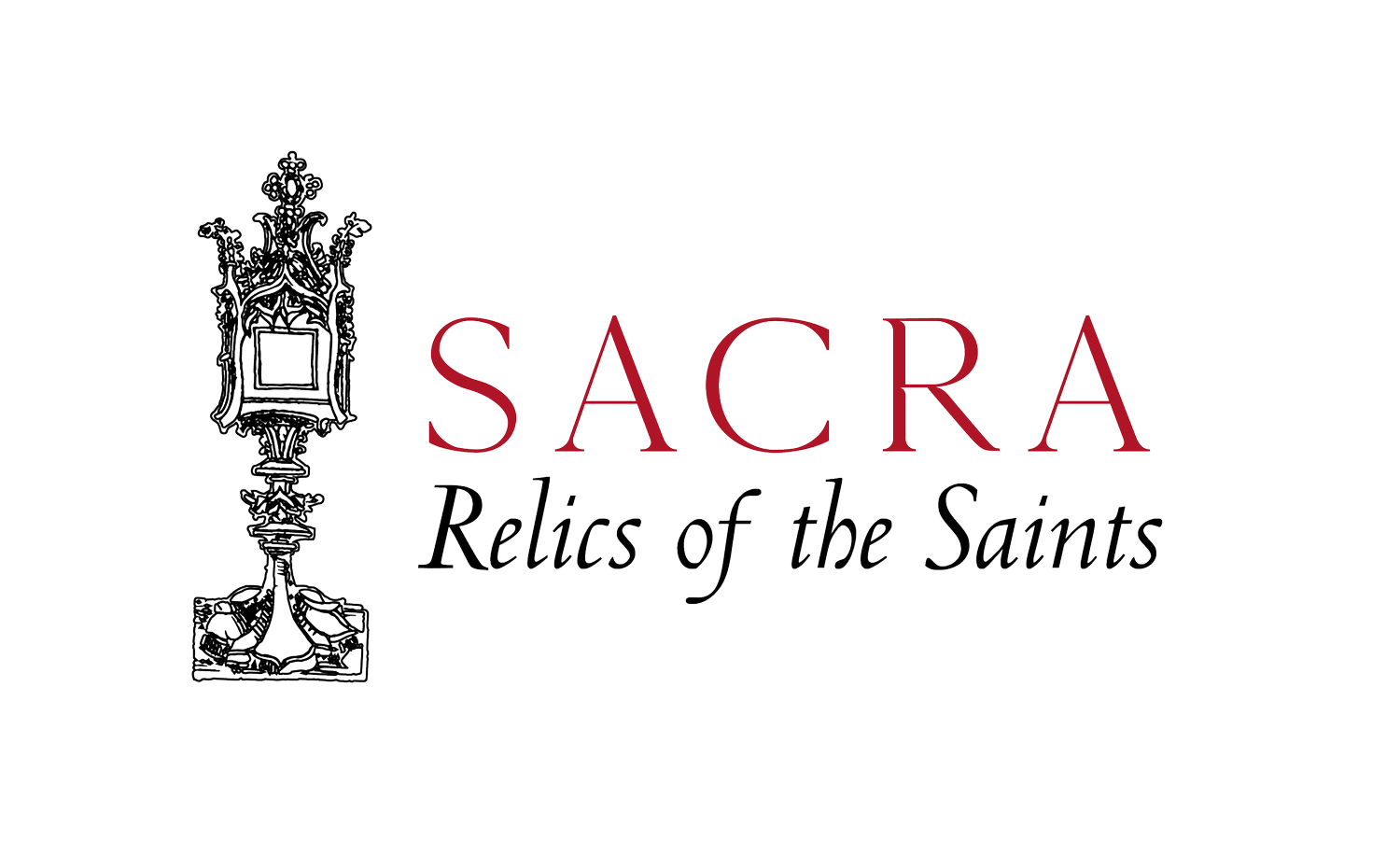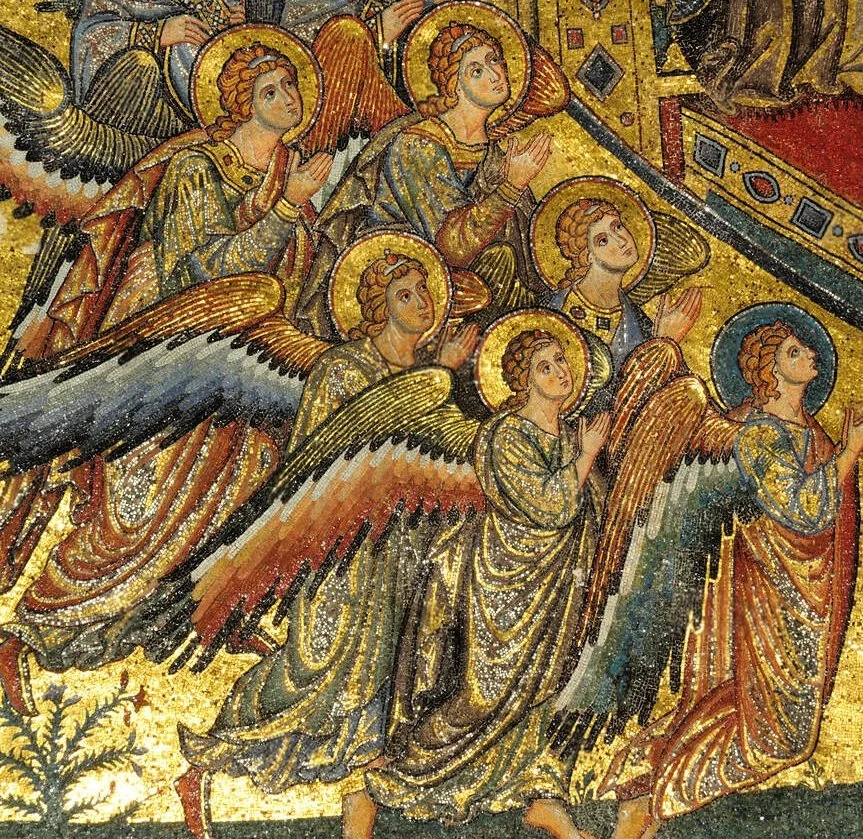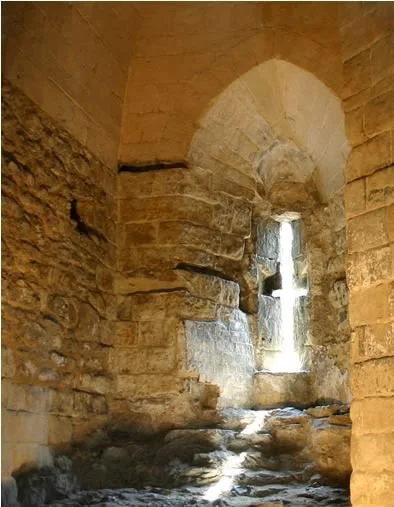Is the Tower of London a Relic?
St Thomas More, the famous English statesman and martyr, was kept in HM Tower of London for eighteen months before his execution on the adjacent Tower Hill on July 6, 1535.
St Thomas More and his daughter in the Tower, engraving.
Sacra’s recent tour of the Tower and some of its cells explores an essential link between pilgrimage and relics. The fundamental question is this: Can a place be a relic? If so, what does it mean for someone to visit there?
The Tower of London is for many people one of the most evocative tourist attractions of the city. It’s (often exaggerated) image of a gruesome place of torture, its power as a political symbol, its famous beefeaters, the ravens present there, the site of the Crown Jewels—many arrive at the Tower only aware that it is one of the ‘must-see’ sites. But what makes the difference between a visitor, or even a tourist, and a pilgrim? Can you know him by how he looks?
A tourist attempting to photograph a sheep.
The fundamental disposition in question here is one shared by pilgrims and people approaching a relic for veneration: an inward posture of receptivity to God’s grace working through His saints, and a willingness to receive what His Church has to offer her children. This inward attitude sometimes manifests in outward gestures of reverence, and should at least inform our behaviour when visiting sacred sites.
The events which happen in a given place, the holy men who occupied it, the lives they lived there leave their mark; they give the place its character. If our mortal eyes could see the grace flowing from such places, it would perhaps be a marvel to us.
Angels in Adoration, detail from Santa Maria Maggiore, Rome.
Sacra recently visited the cells where St Thomas More was held prisoner, as well as the cell directly above where St John Fisher was detained. One can imagine the day-to-day operations of the Tower and the daily routine of the men held there. Such high-profile prisoners would doubtless be allowed visitors, as wells as some domestic comforts. We know that St Thomas kept up correspondence, had visits from his family (though these were used as leverage against him), and had materials for reading and writing.
But we may also ponder the thoughts he turned over alone in his cell, his worries, struggles, his triumphs, and his prayer. We know that Sir Thomas took strength from seeing the Carthusian monks pass by his cell window as they were led to the martyrdom he was soon to share:
‘Look Meg, those blessed fathers be now as cheerfully going to their deaths, as a bridegrooms to their marriage.’
He had spent four years as a younger man living at the Carthusian Charterhouse, and knew the Order’s way of life well.
His prayer book, now kept at Yale University, gives us some idea of his meditation on his impending death, and his gradual turn from this life to the next. The pages bear lines which strung together form a prayer:
‘Give me Thy grace, good Lord, to set the world at naught; to set my mind fast upon Thee; and not to hang upon the blast of men's mouths.
To be content to be solitary; not to long for worldly company; little and little utterly to cast off the world, and rid my mind of all the business thereof; not to long to hear of any worldly things, but that the hearing of worldly phantasies may be to me displeasant.
Gladly to be thinking of God; piteously to call for His help; to lean unto the comfort of God; busily to labour to love Him.’
Thomas More was executed on the Eve of the feast of the Translation of the Relics of St Thomas Becket (a holiday in England) and the Octave-day of Ss Peter & Paul. This connection with his namesake and with the See of Rome was for him, a providential sign of his greater allegiance to the kingdom of heaven.
We share some photographs of these historic and holy sites, and take the opportunity to thank the friendly staff who made it possible.
London is home to an almost innumerable number of other sites associated with the saint. Thomas More was truly a Londoner, a fact illustrated very well by Peter Ackroyd’s wonderful biography. The Center for Thomas More Studies recently commissioned a wonderful map by Mike Hall of the most important sites which is available for purchase here. The attractive map will certainly hang in the Sacra workshop, and will grace the home or office of any of our readers.
The so-called Bell Tower where St John Fisher was kept.
John Fisher, the bishop of Rochester, was the only bishop in all of England to resist King Henry’s Oath of Supremacy. Thomas More wrote of him: ‘I reckon in this realm no one man, in wisdom, learning, and long approved virtue together, meet to be matched and compared with him.’ While there has been some debate about the cell where Thomas More was kept, the location of the cell where Bishop Fisher was held as certain. When the executioner came to inform him that his death would occur later that morning, Fisher replied serenely that he wished to be left to sleep a bit longer. He had made his peace with God, and he knew where he was going. Fisher’s date of execution was also providential, since it coincided with the feast of Britain’s first martyr, St Alban, on 22 June.








